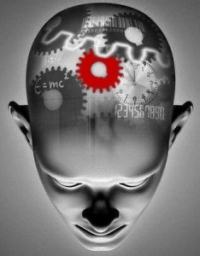The Cognitive Psychology program provides training in a variety of topical areas using modern experimental methods such as carefully controlled behavioral methods and methods and measures drawn from cognitive neuroscience. Graduate students in the program can receive training in cognitive engineering and human factors psychology (following the scientist/practitioner model), developmental cognitive neuroscience, cognitive and decision psychology, and cognitive neuroscience. Graduates of the program are qualified to pursue a wide variety of employment opportunities in both academia and industry.
Some of the issues and questions currently being investigated by members of the Cognitive Psychology program include:
- How should we measure cognitive biases and cognitive abilities, including risk literacy, expertise, and intelligence?
- Can we accelerate skill acquisition and training, including risk literacy development?
- How can we design more user-friendly technologies, including high-stakes risk communications?
- What are the sources of heterogeneity in translational biomarkers for fragile x syndrome and autism, and how do they impact treatment response in clinical trials?
- How can we better understand the neurobiology of misophonia?
- What is the impact of play on child brain development and well-being?
- What can experimental philosophy contribute to the ethical evaluation of choice architecture and human factors engineering?
- How can we identify biases and address disparities in the design of interactive systems and communications?
- How does Ethical Interaction Theory inform legal and policy decisions concerning animal welfare?
- What are the biological and neural mechanisms that underlie the cognitive costs of iron deficiency in women across the lifespan?
- What are the combined effects of Type 2 diabetes and diabetic retinopathy on the ability of people to perceive and remember faces?
- Is it possible to use visual perceptual learning to mitigate the other race effect in memory?
Research performed by members of the Cognitive Psychology program are being and have been supported by funding from the following:
- Federal Aviation Administration
- Health Resources and Services Administration
- Institutes of the National Institutes of Health, including
- National Cancer Institute
- Eunice Kennedy Shriver National Institute of Child Health and Human Development
- National Institute of Environmental Health Sciences
- National Eye Institute
- National Institute of Mental Health
- National Institute of Neurological Disorders and Stroke
- National Oceanic and Atmospheric Administration
- National Science Foundation
- United States Department of Commerce
- United States National Academies of Science, Engineering, & Medicine
Current faculty members include Edward Cokely, Lauren Ethridge, Adam Feltz, and Michael Wenger (program coordinator).
Current graduate students include Brenna Arledge, Amy Barnett, Dana Mahmoud Elhaj, Uyen “Gwen” Hoang, Jenna Holt, Eunsung Lee, Farima Naghash, Sarah Newbolds, Long Nguyen, Jordan Norris, Olivia Perrin, Rachana Rajala, Alejandra Sanroman, and David Weed.
Members of the Cognitive Psychology program conduct research at the Brain and Biomarker Lab (BABL), the OU Cognitive Research Facility (OUCog), OU’s National Institute for Risk and Resilience, and at the OU Visual Neuroscience Laboratory (OUVNL).
BABl hosts one high density MagStim/EGI EEG system and one low density Smarting Pro 32 wireless EEG system for mobile applications and field research. The lab also hosts a Tobii Pro Spectrum eye tracking system with tracking speeds up to 1200 Hz to non-invasively capture detailed gaze data in developmental populations.
Located on the second floor of Cate Center 4, the OUCog research facility is a suite of adjoining laboratories used for cognitive and human factors research. The facility houses laboratories for Dr. Cokely and Dr. Feltz, including dedicated human participant testing rooms, access to a conference room, a break room, shared graduate student offices, and a participant waiting/registration area. In addition to dozens of computers for individual cognitive testing and assessment, there are eye trackers, facial and emotional recognition devices, a user experience research suite with motion tracking video and audio recording systems, and group testing facilities for analyzing human and team interactions. For stimulus creation and data analysis, the research facility has a number high-powered PC and Mac workstations configured with graphics and data analysis software (e.g., EPrime, Mathematica, Photoshop, Matlab, R, SPSS, and SAS).
The OUVNL and the BABL Lab share a suite that currently supports Drs. Michael Wenger and Lauren Ethridge in Psychology, and Lei Ding in OU’s School of Biomedical Engineering. The laboratory contains one EMF/RF shielded, sound- and light-attenuated chamber for the collection of EEG data; one magnetically shielded sound- and light-attenuated chamber for the collection of MEG data; and two sound- and light-attenuated chambers for the collection of psychophysical and behavioral data. The lab houses one high-density (128 channel) EEG system. The OUVNL supports visual psychophysics and behavioral testing with a set of fast gray-to-gray LED monitors equipped controlled by custom software for the precise presentation of stimuli and timing of responses. For stimulus creation and data analysis, the lab has three Mac Minis and one Linux workstation configured with graphics and data analysis software (Gimp, Photoshop, Matlab, R, and SAS).


